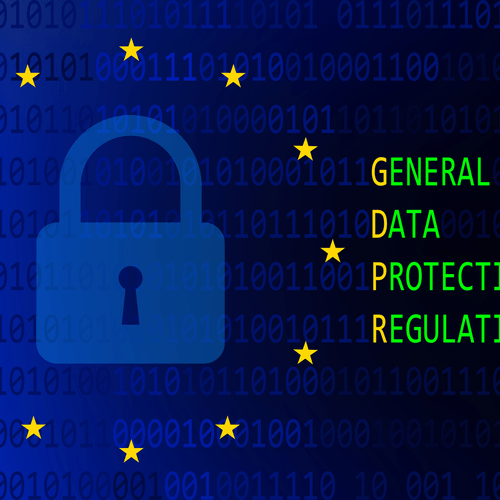However, the original experiments using this technique had a single target, thus the goal was identical in probe and non-probe trials. Here we investigate the extent to which this probe benefit generalizes to targets that are probed occasionally or by no means. The experimental block had the identical 240 trials plus 50 randomly dispersed probe trials, and we various the share of probe trials that matched every goal.

This will mainly be a problem if the same probe has variations between and within the groups, in which case it might not be detected as a BAD probe. It isn’t clear if such a probe will produce spurious expression variations between the groups, however it could be good to develop strategies to detect these cases, when the speed of polymorphism within the groups is high sufficient. We additionally current strategies for estimating the efficiency of our method in removing falsely reported optimistic expression differences between the groups. When there aren’t any or just a few expression differences between the in contrast groups, similar to in our single-tissue dataset, our method is very efficient, removing 98% of those false positives. However, in addition, 20% of genes which didn’t present a gene expression difference—neither in the uncooked information, nor after using the ‘perfect mask’—are detected as differentially expressed after our expression-based masking. Since virtually no additional differences are launched when there are not any expression variations of a molecule, we interpret this to stem from an increase in the energy to detect expression variations, by eradicating noise within the dataset.
Our method performs a t-test of the slopes to every point (green and blue lines), assuming that the intercept is taken from all factors (black line). In this text, we current a technique to detect probes with BADs between species based on the expression knowledge itself. Since the tactic relies on expression, it has no energy to detect variations in unexpressed genes.
Comparable Articles
In this case, an expression-based masks might detect a BAD probe that a sequence-based masks misses; subsequently, not all type 2 errors of the expression-based mask are precise errors. An inspection of such probes typically reveals clear differences in binding affinity (Fig. 2). For such probesets, the assumptions underlying the calculation of expression levels using, for instance, the RMA technique, do not maintain.
Even in datasets where a full sequence-based masks is on the market, additional masking based on the expression information will present a profit (Khaitovich et al., 2004). This is as a outcome of a easy sequence-based mask solely removes probes because of differences in major targets. Changes in sequence or expression levels of secondary targets can still https://www.globalcloudteam.com/ falsify expression differences. Differences in splicing between the groups is also recognized as variations in expression ranges of the mRNA target. Our masks detects circumstances where some of the assumptions of the strategies used to calculate gene expression ranges, such because the RMA methodology, break down.
One might design arrays with probes whose targets haven’t any sequence distinction between the species. Some authors have tried to design arrays for all studied species, and through a cross-hybridization design take the BADs under consideration (Gilad et al., 2005). The strategy that we describe on this article is discovering BAD probes, and masking them, i.e. not utilizing them within the expression evaluation. A sequence-based mask solely points to a sequence difference, but not its effect on the probe’s sign.
Article Contents
Accordingly, perceived roughness should replicate probe and surface geometry, exploratory pace, and force. Experiments 1 and 2 in contrast magnitude estimation of roughness with the bare finger and two forms of probes, one designed to eliminate pressure moments, beneath the subject’s energetic management. Log magnitude was constantly a quadratic operate of log spacing between elements in the surface. The location of the perform’s peak was related to the drop point–that is, the spacing at which the probe can just drop between elements–which is affected by probe tip diameter, factor top, and speed. Probe effect is an unintended alteration in system behavior attributable to measuring that system. In code profiling and efficiency measurements, the delays introduced by insertion or elimination of code instrumentation could end in a non-functioning application, or unpredictable behavior.
We see that past six people, the impact of accelerating the variety of individuals per group is negligible. Almost all of these introduced variations disappear after masking, and the expression-based masks is as efficient because the ‘perfect mask’—only 2% of the probesets without an authentic distinction are marked as differentially expressed (Fig. 5a). The results for randomly selected probes have been comparable (see Supplementary Material). BAD probes could probe effect have an especially sturdy impression on studies doing QTL evaluation (Alberts et al., 2007) of gene expression. When an expression difference stems from a sequence difference in a probe’s goal, it’s going to give a very strong signal, mapping precisely to the region in the genome the place the distinction occurs.

Results advised that the probe benefit was proportional to the variety of probes that matched a selected goal. Eye-tracking data recommend that probes increased quitting thresholds, however this failed to supply a generalized profit as a result of it was coupled with an attentional bias toward features of the generally probed targets. In a second approach, Ss looked for weapons amongst an array of photorealistic objects. Targets were exemplars drawn from three basic-level categories (guns, knives, axes). In a management block, every basic-level target appeared with a 6.67% prevalence fee. In the probe block, 80% of probe targets matched one basic-level category, 20% matched a second, and 0% matched the third.
The Consequences Of Probe Binding Affinity Differences On Gene Expression Measurements And Tips On How To Cope With Them
One such methodology entails the use of small photocells positioned in entrance of the oscilloscope screen with the output of the photocells connected to a recorder.
We can see that most of the errors that had been launched by flipping are eliminated by the mask—it performs nearly as well as the perfect mask—4% versus 5%. The purpose for the massive difference between the 2 datasets, subsequently, just isn’t decreased energy. Instead, it could be that masking makes extra expression variations between the tissues obvious, an effect unrelated to flipping. In fact, a lot of the new expression variations we see after masking of flipped information, are also noticed once we run masking algorithm for the uncooked (unflipped) two-tissue dataset and apply the resulting masks on it. We hypothesize that it’s because masking removes probes which have a distinction in cross-hybridization profiles between the tissues, current already within the uncooked information.
- Vibratory roughness notion happens when people feel a surface with a rigid probe.
- Alberts et al. (2007) use a method much like the one utilized by Greenhall et al. (2007) to appropriate specifically for such problems.
- Experiments 1 and a pair of in contrast magnitude estimation of roughness with the naked finger and two forms of probes, one designed to get rid of force moments, underneath the topic’s energetic control.
- We have shown that relatively few samples per group are sufficient to assemble a mask—even three already provide some power, which increases until we reach about 10 samples per group.
- One may design arrays with probes whose targets have no sequence distinction between the species.
Affymetrix arrays comprise probes matching the goal perfectly (called PM probes), as properly as probes containing a single MM to the goal (called MM probes). MM probes are similar to the PM probes, aside from a change within the middle nucleotide. In half of a dataset’s samples, in a fraction of probes (e.g. 20%), we exchanged the PM probe intensity for the MM probe intensity, and thus created artificial BAD probes (‘flipped probes’). We then used those synthetic datasets to create masks, and in contrast expression values obtained before and after masking. Since PM and MM values are used for deciding whether a probeset is expressed, we used the ‘expressed’ calls from the original dataset. To study these possibilities, Figure 5 distinguishes between errors in detecting expression differences that had been launched by the masks and people errors that appeared when the BAD probes were introduced, when MM and PM had been flipped.
Since we also tackle differences between species in this article, and not just polymorphisms, we will name this distinction a ‘binding affinity difference’ (BAD) and a probe hybridizing with BAD targets, a ‘BAD probe’. Since part of a probe’s signal comes from its hybridization with sequences others than the desired goal (Binder and Preibisch, 2005), BAD probes can even come up from a distinction within the secondary target—either a distinction in sequence or in expression level. Finally, BAD probes may also be produced because of differences within the splicing of transcripts between the teams. Large-scale measurement of gene expression provides a useful software for studying the phenotype of organisms.
In electronics, by attaching a multimeter, oscilloscope, or different testing gadget via a test probe, small quantities of capacitance, resistance, or inductance could also be launched. Though good scopes have very slight results, in sensitive circuitry these can lead to surprising failures, or conversely, unexpected fixes to failures. In utilizing pulsed eddy currents to determine the thickness of cladding, it was discovered that the output wave as observed on the display screen of a cathode-ray oscilloscope had a number of uncommon points. These factors were stationary as the probe-to-metal spacing various, but moved vertically because the cladding thickness changed. Tests on a clad plate appeared to point that the factors could presumably be used to discover out cladding thickness with little interference from modifications in the probe-to-metal spacing.
Thus, our method will point to further problematic probes, and improve the sequence-based mask. We used the simulated datasets to study the influence of BAD probes and masking on expression differences. We can examine our outcomes to each the expression differences noticed earlier than the probes had been flipped, and to the results one would obtain with a ‘perfect’ mask, since we know precisely which probes must be eliminated (exactly people who have been flipped). Notice that after applying this good masks, which eliminates all flipped probes, we do not obtain exactly the unique expression values and expression variations. In the simulated datasets, types 1 and 2 errors of detecting the flipped probes for nearly any cutoff are smaller than for the human–chimpanzee mask in contrast towards sequence mask (Supplementary Fig. 3). Supplementary Figure 3 exhibits that our capability to detect flipped probes within the simulated dataset is a function of the sort of change within the MM probe and the GC content of the rest of the probe.

It will due to this fact appear to be cis-regulation when the sequence distinction is in the target region of the gene, or as trans-regulation when the sign stems from a sequence difference in a secondary target. Alberts et al. (2007) use a method much like the one utilized by Greenhall et al. (2007) to correct particularly for such problems. The first dataset, the ‘single-tissue dataset’, consists of 30 samples of wholesome human prefrontal cortex, arbitrarily divided into two groups (Ryan et al., 2006). In one of many two teams, group 1, we randomly chosen 20% of the probes, and changed the PM values with the corresponding MM values. This is the proportion of BAD probes one would acquire from a sequence difference of ∼1% per nucleotide.
A not-for-profit group, IEEE is the world’s largest technical skilled organization devoted to advancing technology for the profit of humanity.© Copyright 2024 IEEE – All rights reserved. In debugging of parallel pc programs, generally failures (such as deadlocks) aren’t current when the debugger’s code (which was meant to assist to find a reason for deadlocks by visualising points of interest in this system code) is hooked up to this system. This is as a outcome of further code changed the timing of the execution of parallel processes, and because of that deadlocks were avoided.[1] This type of bug is known colloquially as a Heisenbug, by analogy with the observer impact in quantum mechanics.
We have proven that comparatively few samples per group are adequate to assemble a mask—even three already provide some power, which increases till we reach about 10 samples per group. Note that each one samples used in the evaluation should be run on the same microarray scanner, as a result of we use the fluorescence response curve of the probes, which differs not solely from machine to machine, but even throughout calibrations of the identical machine. When inadequate numbers of samples per species from a single tissue are available, several different tissues could be pooled for the purpose of building the masks. For example, our dataset for locating variations between people and chimpanzees comprises data from 5 different brain regions, and the mouse dataset accommodates seven completely different brain areas. Notice that expression differences between the tissues do not essentially hamper our capability to assemble the mask.